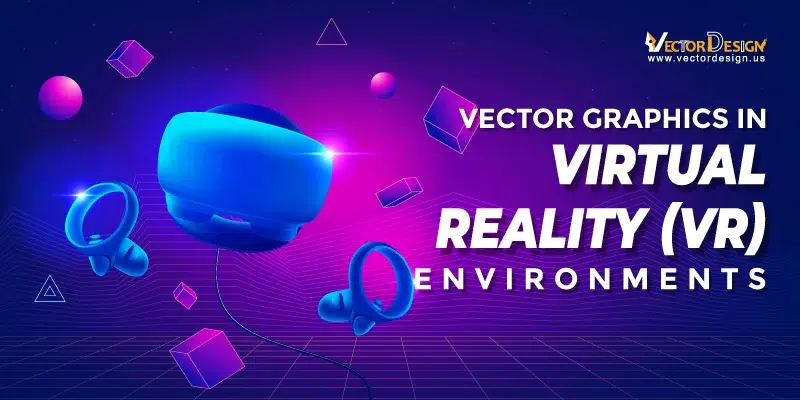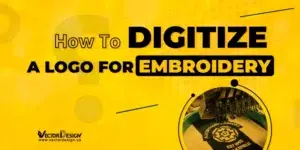Welcome to the exciting mix of Vector Graphics and Virtual Reality (VR). Vector Graphics in Virtual Reality brings a seamless blend of precision and versatility. Vector Graphics, like magical drawings on a computer. They’re super smart because you can make them big or small, and they always look sharp and clear. It’s like having digital superheroes that never get blurry.
This unique quality reaches its peak in the process of image to vector conversion. VR is like stepping into a new world through special goggles. When Vector Graphics and VR come together, it’s pure magic. Precision meets immersion, promising endless possibilities. Join us on this thrilling journey at the crossroads of Vector Graphics and the mesmerizing world of Virtual Reality.
Benefits of Vector Graphics in VR Environments
Vector Graphics in Virtual Reality offers several advantages, enhancing the overall quality and performance of the virtual environment:
Scalability:
Vector Graphics are like magic that can be resized without losing quality. In VR, this means that no matter the size of the screen or device, graphics stay sharp and clear. It’s like having flexible and adaptable visuals that fit perfectly into any virtual world.
Resolution Excellence:
VR demands high-quality visuals, and Vector Graphics deliver just that. Whether you’re exploring VR on a big headset or a tiny screen, the resolution remains top-notch. The ability of Vector Graphics to maintain clarity ensures a crisp and detailed visual experience, making your virtual adventures all the more captivating.
Enhanced Performance:
Better performance in VR means things run super smoothly. It’s like a fast and exciting adventure without any delays. Every move you make happens quickly, making your time in the virtual world more fun and lively. It’s like upgrading your virtual experience to be super speedy and enjoyable.
Efficient Memory Usage:
Efficient memory usage in VR is all about using just enough space to make everything run smoothly. It’s like having a clever assistant that knows how to use memory wisely, ensuring your VR experiences load quickly and work seamlessly. This efficiency not only speeds up your virtual adventures but also includes more exciting features. In simpler terms, it’s like having a smart helper making sure your time in the virtual world is speedy, fun, and fantastic.
Applications of Vector Graphics in VR:
Hey there! Ever wondered how those cool drawings can make virtual reality (VR) even more awesome? Well, it’s like magic when Vector Graphics joins the VR party! Check out these super cool things they do:
User Interfaces (UI) Design:
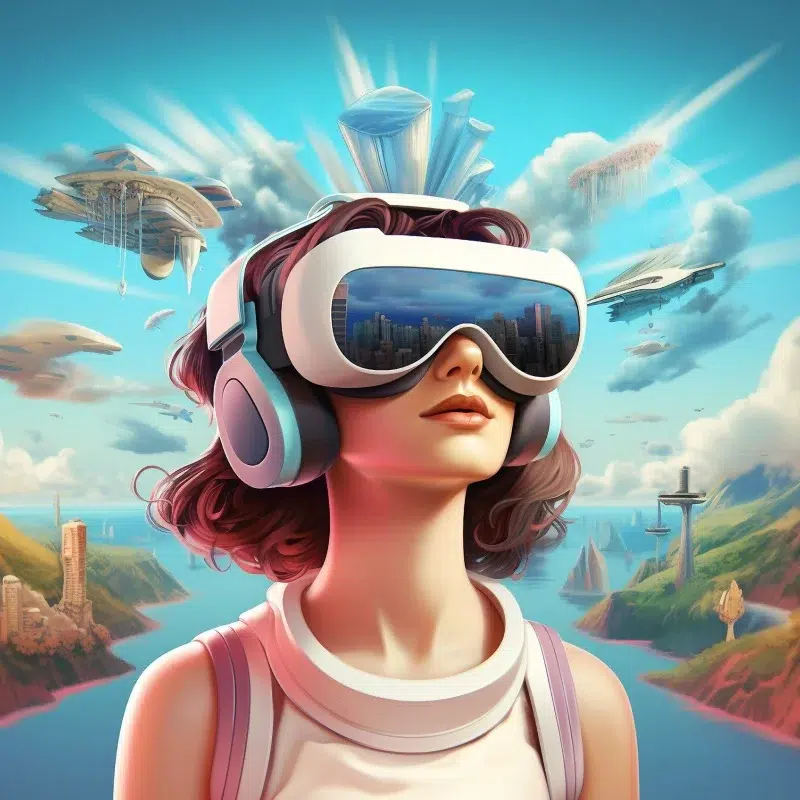
Creating buttons and things in virtual reality (VR) is like designing menus and clickable stuff. With the help of Vector Graphics, these buttons not only look cool but also work smoothly when you interact with them. It’s all about making the user interface (UI) in VR user-friendly and visually appealing.
3D Modeling and Animation:
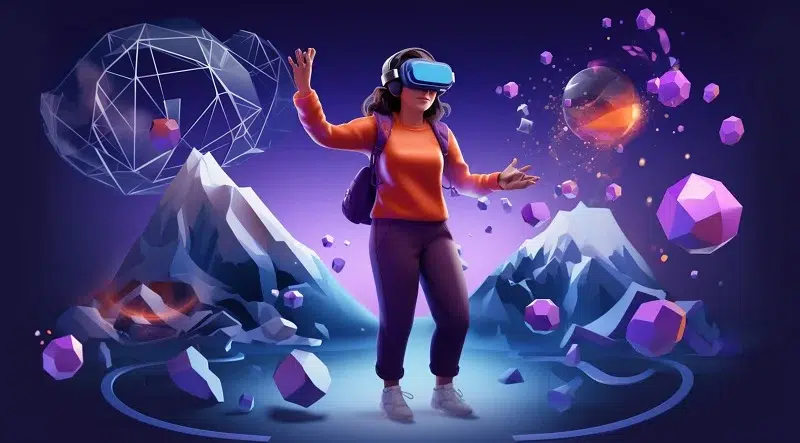
Creating and animating 3D models in virtual reality is akin to constructing and bringing them to life in a digital world. With Vector Graphics, experts design detailed 3D objects, like characters or structures, and bring them to life with cool movements. It’s as if they’re the architects of the VR universe, crafting things that you can see and interact with in three dimensions. This adds a whole new level of excitement and realism to the virtual experience.
Interactive and Immersive Experiences:
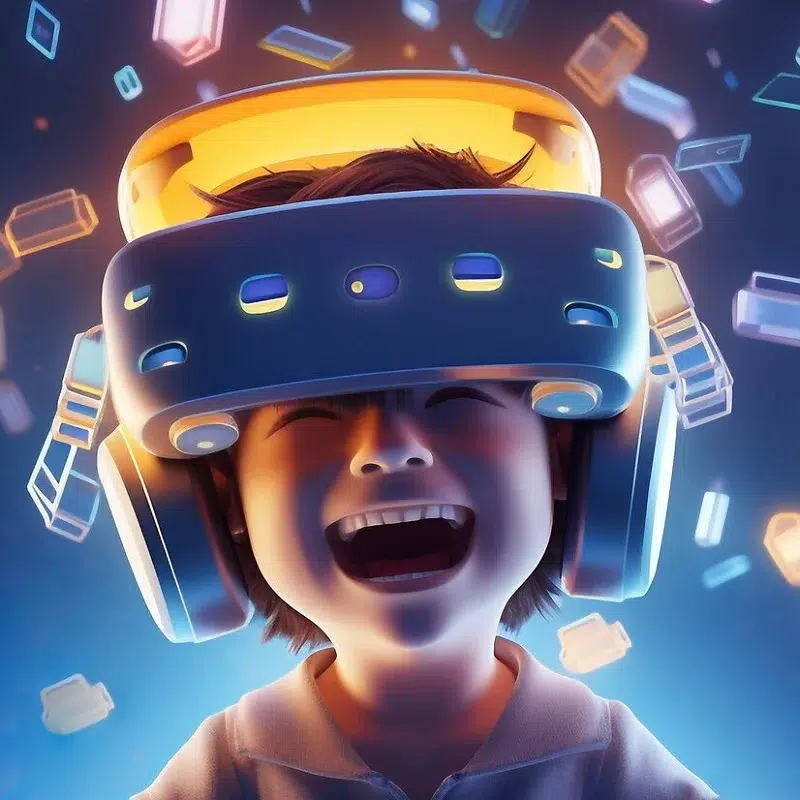
Making fun adventures in virtual reality (VR) is creating stories where you feel inside them. With Vector Graphics, VR becomes a place with lots of cool things to discover and play with. It’s not just like watching a movie or playing a game – it’s like jumping into the story and being a real part of all the excitement.
Training Simulations and Educational Content:
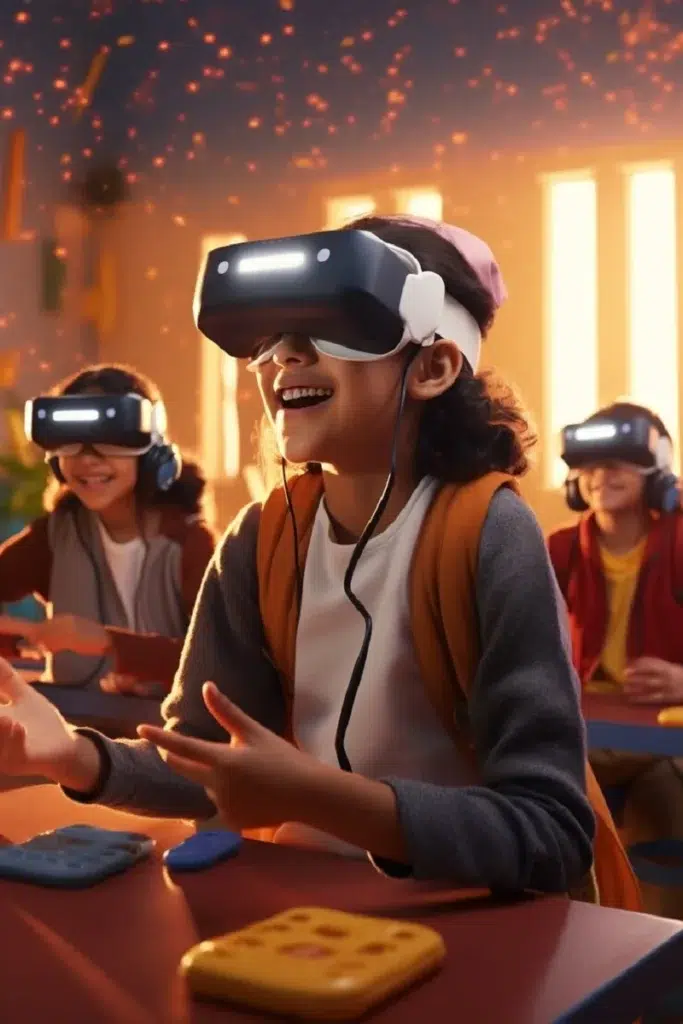
Imagine using virtual reality (VR) to learn or practice things in a fun way. This is what happens when Vector Graphics gets involved. They help create simulations for training and educational content. It’s like having a cool, realistic virtual teacher or a practice space where you can learn and improve your skills. So, when Vector Graphics teams up with VR for training and learning, it’s like stepping into a cool classroom.
Technical Considerations
Now, let’s unravel the tech wizardry that makes your VR adventures truly magical with Vector Graphics:
Vector Graphics Formats Compatible with VR
Think of SVG and AI as the cool paint colors in the artist’s palette for Virtual Reality (VR). These formats, along with others, are like the unique shades that bring your virtual world to life. Selecting the right format is like picking the best brush for a masterpiece. Each format has its strengths, and choosing wisely ensures your VR canvas is painted with the perfect strokes. It’s the art of making your virtual adventure visually stunning with the magic of vector graphics in virtual reality.
Rendering Processes and Performance Optimization
In the world of Virtual Reality (VR), making things look awesome and run smoothly is a bit like using turbo boosters. Ever wanted your graphics to go faster? That’s what GPU Acceleration does in VR. It’s like giving your virtual world a speedy pair of rocket shoes, making everything look extra cool and smooth. Now, imagine having magical glasses for your pictures. With Level of Detail (LOD) Techniques, pictures look super detailed up close and a bit simpler from afar. It’s like having smart graphics that save energy and power for more VR fun, making your virtual adventure run like a breeze.
Integration with VR Development Platforms
VR has favorite hangout spots like Unity and Unreal Engine. Making your graphics compatible is like ensuring they speak the same language. It’s the tech version of making sure everyone at the party understands each other. Imagine SDKs and APIs as the friendly translators at the party. They help Vector Graphics and VR platforms talk to each other smoothly. It’s like making sure everyone can share stories and have a good time, creating perfect harmony in your virtual gathering.
Best Practices for Implementing Vector Graphics in VR:
Just imagine your awesome drawings coming alive in Virtual Reality (VR) – it’s like magic! But to make sure it’s super fantastic, we need some special tricks. Let’s check out the best ways to make your VR adventure not just good but amazing:
Design Guidelines for VR Vector Graphics
Design guidelines are the golden rules for creating stunning drawings in VR. They help artists bring their imagination to life in a way that looks amazing and runs smoothly in the virtual world.
Considerations for Cross-Platform Compatibility
VR is like a huge playground with different swings and slides (devices). Ensuring your drawings work on all of them is like inviting everyone. No matter their device, enjoy and play in your VR creation.
Importance of Accessibility in VR Environments
Accessibility means making sure everyone, regardless of their abilities, can join the fun in VR. Opening the doors wide ensures that everyone can be part of the adventure and explore the captivating drawings together.
Collaboration between Graphic Designers and VR Developers
It’s teamwork time! Graphic designers and VR developers joining forces is like having a superhero squad. They share ideas and skills and ensure your VR journey becomes a masterpiece. It’s the perfect blend of creativity and technology for an unforgettable experience.
Challenges and Solutions
Let’s explore these challenges and discover the solutions that ensure your VR adventure is nothing short of spectacular:
- Addressing Performance Issues:
Challenge: Sometimes, making all the cool things happen in VR can slow things down, like when too many friends want to play at once.
Solution: No worries, though! Optimize graphics updates for better visuals. Cut unnecessary programs. Enable acceleration, and upgrade RAM. Make sure the use of tools for efficiency.
These tricks enhance your system’s performance swiftly.
- Ensuring Consistency Across VR Devices:
Challenge: Picture having various game controllers, each offering a slightly different feel to the game. Similarly, in VR, different devices can affect your experience.
Solution: Your design dream team ensures a consistent and enjoyable VR experience for users across different devices. They focus on creating a seamless VR playground, optimizing gameplay mechanics, and testing rigorously to address variations in controllers. With a user-friendly interface and scalable graphics, their goal is to make the VR experience enjoyable for a broad audience, providing a uniform and fantastic experience for all.
Accessibility Challenges and Solutions:
Challenge: Just as a maze might be difficult for some to navigate, there are challenges in making sure VR is accessible to everyone, regardless of their abilities.
Solution: let people customize things like the size of text or colors to make it comfortable for them. Think of adding voice commands so that even those who might need some extra help can still enjoy and interact with your VR content.
Future Developments and Improvements:
Challenge: Imagine VR as a constantly evolving video game, and we want to make it even more exciting with new features and improvements.
Solution: Picture your drawings as something that can get even cooler over time. To do that, keep learning about new things in virtual reality. Work with other people to solve problems and come up with cool ideas. Regularly update your drawings, like you update apps on your phone, to make them better, add exciting features, and stay ahead in the ever-changing world of virtual reality.
Conclusion
As we wrap up our exploration of the mix between Vector Graphics in Virtual Reality (VR), it’s like discovering the perfect blend of superpowers. These drawings act like superheroes, bringing precision and clarity to the VR world. Whether it’s crafting buttons, creating 3D wonders, or making learning a blast, the synergy of drawings and VR opens up a universe of exciting possibilities. This dynamic partnership transforms the virtual landscape into a magical realm. this promising endless adventures and discoveries. The journey doesn’t end here; it’s an invitation to continue delving into the wonders that cool drawings and VR can create together!
As we conclude, let’s not forget that the magic doesn’t end here. The potential of Vector Graphics in (VR)Virtual Reality is vast and ever-evolving. There are endless avenues to explore, more adventures to design, and new educational frontiers to conquer. So, embrace the magic, keep exploring, and let Vector Graphics continue to elevate the wonders of Virtual Reality. The future is yours to create.
FAQ:
What are Vector Graphics in Virtual Reality (VR)?
Vector Graphics in VR are like super-smart pictures that use cool math to look clear and sharp in the virtual world. They help make things in VR look awesome and detailed.
How do Vector Graphics make VR experiences better?
Think of Vector Graphics as the superheroes of VR pictures. They make buttons, 3D stuff, and everything in VR look fantastic and fit perfectly, making the virtual adventure more exciting and real.
Which formats are commonly used for Vector Graphics in VR?
SVG and AI are the favorite outfits for Vector Graphics in VR. They are used a lot because they help the graphics look great on all kinds of VR devices.
What challenges can happen with Vector Graphics in VR?
Sometimes, Vector Graphics in VR might face problems like going a bit slow or working differently on various devices. But don’t worry – there are smart solutions to make everything run smoothly.
How do Vector Graphics work with Unity or Unreal Engine in VR?
Imagine Unity and Unreal Engine as the cool playgrounds for VR adventures. Vector Graphics joins the fun by using special tools (SDKs and APIs) that help them understand and work well with these playgrounds. It’s like speaking the same language for a perfect playtime!

